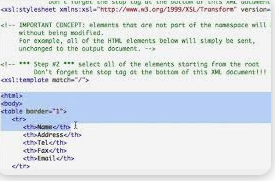Understanding currency pairs is fundamental to trading in the foreign exchange (Forex) market. A currency pair represents the value of one currency relative to another and is the basis of all Forex transactions. This guide will explain the intricacies of currency pairs, how they are traded, and their significance in the global financial market. Whether you are a beginner or an experienced trader, mastering the concept of currency pairs can enhance your trading strategies and improve your market analysis.
What is a Currency Pair?
A currency pair is a quotation of two different currencies, with the value of one currency being quoted against the other. The first currency listed in the pair is called the base currency, and the second currency is known as the quote currency. For example, in the currency pair EUR/USD, the euro (EUR) is the base currency, and the U.S. dollar (USD) is the quote currency. The currency pair indicates how much of the quote currency is needed to purchase one unit of the base currency.
Key Points:
- Base Currency: The first currency in the pair.
- Quote Currency: The second currency in the pair.
- Exchange Rate: The value of the base currency in terms of the quote currency
Example: The EUR/USD currency pair is one of the most traded pairs in the Forex market, reflecting the economic relationship between the Eurozone and the United States. If the EUR/USD exchange rate is 1.2500, it means that 1 euro is equivalent to 1.2500 U.S. dollars.
Understanding currency pairs is crucial for making informed trading decisions and predicting market movements. This knowledge forms the foundation for developing advanced trading strategies and enhancing overall financial literacy in the Forex market.
By grasping the basic concepts and terminology associated with currency pairs, traders can better navigate the complexities of Forex trading and leverage market opportunities for profitable outcomes.
How Do Currency Pairs Work?
Currency pairs in Forex trading operate by comparing the value of one currency against another. This comparison forms the basis for all transactions in the Forex market. Each pair involves a base currency and a quote currency, where the base currency is bought or sold in exchange for the quote currency. For instance, if you trade the EUR/USD pair, you are simultaneously buying euros and selling U.S. dollars, or vice versa.
The exchange rate fluctuates due to various economic factors, including interest rates, economic data, and geopolitical events. These fluctuations create opportunities for traders to profit from the changing values of currencies. When you buy a currency pair, you profit if the base currency strengthens relative to the quote currency. Conversely, when you sell a currency pair, you profit if the base currency weakens.
In the Forex market, trades are executed based on bid and ask prices. The bid price is the highest price a buyer is willing to pay for a currency pair, while the ask price is the lowest price a seller is willing to accept. The difference between these prices is known as the spread, which is a key consideration for traders as it impacts potential profits.
What are Major Currency Pairs?
Major currency pairs are the most traded pairs in the Forex market, typically involving the U.S. dollar as one half of the pair. These pairs are highly liquid, meaning they can be bought and sold quickly without causing significant price changes. The most common major pairs include EUR/USD (euro/U.S. dollar), USD/JPY (U.S. dollar/Japanese yen), GBP/USD (British pound/U.S. dollar), and USD/CHF (U.S. dollar/Swiss franc).
The liquidity of major pairs results in tighter spreads, making them more cost-effective to trade. Their high trading volume also means that they are less volatile compared to minor or exotic pairs, providing a more stable trading environment for both novice and experienced traders.
Major currency pairs are influenced by significant economic indicators and central bank policies from the countries involved. For example, decisions by the Federal Reserve (U.S.) and the European Central Bank (Eurozone) can greatly impact the EUR/USD pair. Traders closely monitor these economic events to predict price movements and make informed trading decisions.
How to Read Currency Pair Quotes?
Reading currency pair quotes is essential for understanding and executing trades in the Forex market. A typical quote is displayed as two prices: the bid price and the ask price. The bid price is the rate at which you can sell the base currency, while the ask price is the rate at which you can buy the base currency. The difference between these prices is the spread.
For example, a EUR/USD quote of 1.2100/1.2102 means you can sell one euro for 1.2100 U.S. dollars (bid price) and buy one euro for 1.2102 U.S. dollars (ask price). The spread in this case is 0.0002 or 2 pips, which represents the broker’s fee for facilitating the trade.
Understanding the bid and ask prices helps traders determine their entry and exit points in the market. It is also crucial for calculating potential profits or losses, as the spread impacts the overall cost of the trade. Additionally, knowing how to interpret these quotes allows traders to make quick and informed decisions, essential in the fast-paced Forex market (Vantage Markets) (Forex Academy).
What is the Role of Base and Quote Currencies?
In Forex trading, the base currency is the first currency listed in a currency pair, while the quote currency is the second. The base currency represents the amount of the quote currency needed to buy one unit of the base currency. For example, in the EUR/USD pair, EUR is the base currency and USD is the quote currency. If the pair is quoted at 1.2500, it means that 1 euro can be exchanged for 1.2500 U.S. dollars.
The role of these currencies is to facilitate the comparison of their values and to execute trades based on their relative strengths. Traders can either take a long position, buying the base currency and selling the quote currency, or a short position, selling the base currency and buying the quote currency, depending on their market expectations.
The interplay between the base and quote currencies allows traders to speculate on market movements and profit from fluctuations in exchange rates. Understanding the roles of these currencies is fundamental to developing effective trading strategies and making informed decisions in the Forex market.
How Do Interest Rates Affect Currency Pairs?
Interest rates play a significant role in determining the value of currency pairs. Central banks set interest rates as part of their monetary policy to control inflation and stabilize the economy. These rates directly influence the flow of investment in and out of a country, affecting the demand for its currency.
Higher interest rates typically attract foreign investment, leading to an appreciation of the currency. Conversely, lower interest rates can result in a depreciation of the currency as investors seek higher returns elsewhere. For example, if the European Central Bank raises interest rates while the Federal Reserve keeps rates unchanged, the euro may strengthen against the U.S. dollar, impacting the EUR/USD currency pair.
Traders closely monitor interest rate announcements and economic indicators that influence central bank decisions. By understanding the relationship between interest rates and currency values, traders can predict market movements and adjust their trading strategies accordingly. This knowledge is crucial for managing risks and capitalizing on opportunities in the Forex market.
What are Minor Currency Pairs?
Minor currency pairs, also known as cross-currency pairs, do not include the U.S. dollar. These pairs consist of two major currencies other than the USD, such as EUR/GBP (euro/British pound) or AUD/JPY (Australian dollar/Japanese yen). Minor pairs are typically less liquid than major pairs, leading to wider spreads and potentially higher volatility.
Traders often engage with minor pairs to diversify their portfolios and capitalize on unique economic relationships between countries. For example, trading the EUR/GBP pair might involve analyzing economic data from both the Eurozone and the United Kingdom, offering different opportunities and challenges compared to trading pairs that include the USD.
Despite their lower liquidity, minor currency pairs can still provide profitable trading opportunities, particularly for those who are well-versed in the economic indicators and geopolitical events influencing these currencies. Understanding the characteristics of minor pairs is essential for effective trading and risk management in the Forex market.
What are Exotic Currency Pairs?
Exotic currency pairs involve one major currency and one currency from an emerging or less commonly traded economy. Examples include USD/TRY (U.S. dollar/Turkish lira) and EUR/SGD (euro/Singapore dollar). These pairs are typically characterized by lower liquidity, wider spreads, and higher volatility compared to major and minor pairs.
Trading exotic pairs requires a deep understanding of the economic and political conditions of the emerging market involved. These pairs can be more susceptible to economic shocks, policy changes, and geopolitical events, making them riskier but potentially more rewarding for experienced traders.
Due to their high volatility and lower liquidity, exotic currency pairs are often recommended for advanced traders who have a higher risk tolerance.
What are Commodity Currency Pairs?
Commodity currency pairs, often called commodity currencies, represent forex currency pairs from nations with extensive commodity reserves. The value of these pairs is strongly linked to the shifts in commodity prices, given these nations’ roles as producers and exporters of these commodities. Examples include the Australian dollar (AUD), Canadian dollar (CAD), and New Zealand dollar (NZD).
These currencies are highly correlated to commodity prices because their economies rely heavily on the export of natural resources. For instance, the value of the AUD/USD pair is influenced by Australia’s export of coal and iron ore, while the USD/CAD pair is affected by Canada’s oil exports. Traders often use these pairs to hedge against commodity price fluctuations or to speculate on changes in the global commodity markets.
How Do Exchange Rates Influence Currency Pairs?
Exchange rates play a critical role in determining the value of currency pairs in the forex market. An exchange rate is essentially the price at which one currency can be exchanged for another. It is determined by the dynamics of supply and demand within the forex market. Various factors such as economic indicators, political events, and market sentiment can cause fluctuations in exchange rates.
One of the primary influences on exchange rates is the interest rate set by a country’s central bank. When a central bank raises interest rates, it typically strengthens the country’s currency. This is because higher interest rates offer better returns on investments denominated in that currency, attracting foreign capital. Conversely, when a central bank lowers interest rates, the currency tends to weaken as investors seek higher returns elsewhere.
For instance, if the Federal Reserve in the United States decides to increase interest rates, the value of the US Dollar may rise relative to other currencies. This makes currency pairs such as EUR/USD and GBP/USD adjust accordingly, as the dollar strengthens against the Euro and the British Pound. Similarly, if the European Central Bank lowers interest rates, the Euro might weaken, impacting pairs like EUR/GBP and EUR/USD【66†source】.
What Factors Affect Currency Pair Fluctuations?
Several factors contribute to the fluctuations in currency pairs, including economic indicators, political stability, and market sentiment. Economic indicators such as GDP growth, unemployment rates, and consumer price indices provide insights into the economic health of a country, influencing investor perceptions and currency values. For example, strong GDP growth can lead to an appreciation of the country’s currency as it signals a robust economy.
Political events and stability also play a significant role. Elections, government policies, and geopolitical tensions can create uncertainty, leading investors to move their capital to safer assets. This can result in significant shifts in exchange rates as currencies from politically stable regions become more attractive.
Market sentiment, driven by the collective emotions and expectations of investors, can cause rapid movements in currency pairs. News events, economic forecasts, and speculative trading can lead to quick adjustments in exchange rates as traders react to new information. For instance, a positive economic report can boost investor confidence, leading to an appreciation of the related currency.
How Do Economic Indicators Impact Currency Pairs?
Economic indicators are essential tools for traders to assess the health of an economy and predict potential movements in currency pairs. Indicators such as inflation rates, employment figures, and trade balances provide critical data that influence investor decisions and currency values.
Inflation rates, for example, affect purchasing power and can lead to central bank actions. If inflation is rising, a central bank might increase interest rates to cool down the economy, which can strengthen the currency. Conversely, low inflation might lead to rate cuts, weakening the currency.
Employment figures are another crucial indicator. High employment levels typically signal a healthy economy, which can boost the currency as investor confidence grows. On the other hand, rising unemployment can indicate economic troubles, leading to a depreciation of the currency
Trade balances also impact currency values. A country with a trade surplus (exporting more than it imports) will generally see its currency appreciate due to higher demand for its goods and services. Conversely, a trade deficit can weaken a currency as it indicates higher demand for foreign currencies to pay for imports
Understanding these factors allows traders to make informed decisions and anticipate changes in currency pairs, helping them manage risks and capitalize on market opportunities.
Conclusion
Currency pairs is fundamental to navigating the forex market effectively. Currency pairs represent the value relationship between two currencies, enabling traders to engage in buying and selling based on exchange rate fluctuations. Recognizing the distinctions among major, minor, and exotic currency pairs helps traders make informed decisions about their investments and strategies.
Exchange rates, influenced by factors such as interest rates, economic indicators, and political stability, play a critical role in determining the value of currency pairs. Interest rates, in particular, are a powerful tool used by central banks to control economic activity, directly impacting currency values and exchange rates. Economic indicators like inflation, employment rates, and trade balances provide crucial insights into the economic health of a country, guiding traders in predicting potential currency movements.
By comprehensively understanding these elements, traders can develop strategies that align with market conditions and optimize their chances of success in forex trading. Staying informed about global economic trends, central bank policies, and geopolitical developments is essential for making informed trading decisions. Ultimately, mastering the dynamics of currency pairs and exchange rates is key to thriving in the complex and ever-changing forex market.
LinkedIn Description
🚀 **Unlock the Secrets of Forex Trading!** 🚀
Dive deep into the world of currency pairs and discover how exchange rates, economic indicators, and market sentiment shape your trading strategies. Whether you’re a novice or a seasoned trader, mastering these concepts is key to thriving in the forex market. 📈💼
Explore our latest blog to enhance your trading knowledge and make informed decisions that align with market conditions. Stay ahead with insights on major, minor, and exotic currency pairs, and learn how to leverage exchange rate fluctuations for profitable trades. 🌍💹
🔗 [Read the full article]
#ForexTrading #CurrencyPairs #TradingStrategies #FinancialMarket #ForexEducation #InvestSmart
Facebook Description
🌟 **Discover the Power of Currency Pairs in Forex Trading!** 🌟
Are you curious about how exchange rates impact your trading decisions? Our latest blog breaks down the essentials of currency pairs, including major, minor, and exotic pairs. Learn how interest rates and economic indicators influence currency values and how to navigate the forex market effectively. 📊💡
Join us on a journey to mastering forex trading with expert insights and practical tips. Enhance your trading strategies and stay informed about global economic trends. 📈🌐
💬 **Read more here:** [Link to the blog]
#ForexTrading #CurrencyPairs #TradingTips #FinancialInsights #MarketTrends #Investing #ForexEducation #Finance
Instagram Description
💸 **Master Forex Trading with Currency Pairs!** 💸
Ever wondered how exchange rates influence your trades? Our new blog post dives into the dynamics of currency pairs and reveals how economic indicators and interest rates shape the forex market. Perfect for both beginners and seasoned traders! 📊✨
Boost your trading skills with our expert insights and stay ahead in the game. Click the link in our bio to read more! 📈🌍
#ForexTrading #CurrencyPairs #TradingTips #MarketAnalysis #Investing #Finance #ForexEducation #TradeSmart #EconomicTrends












